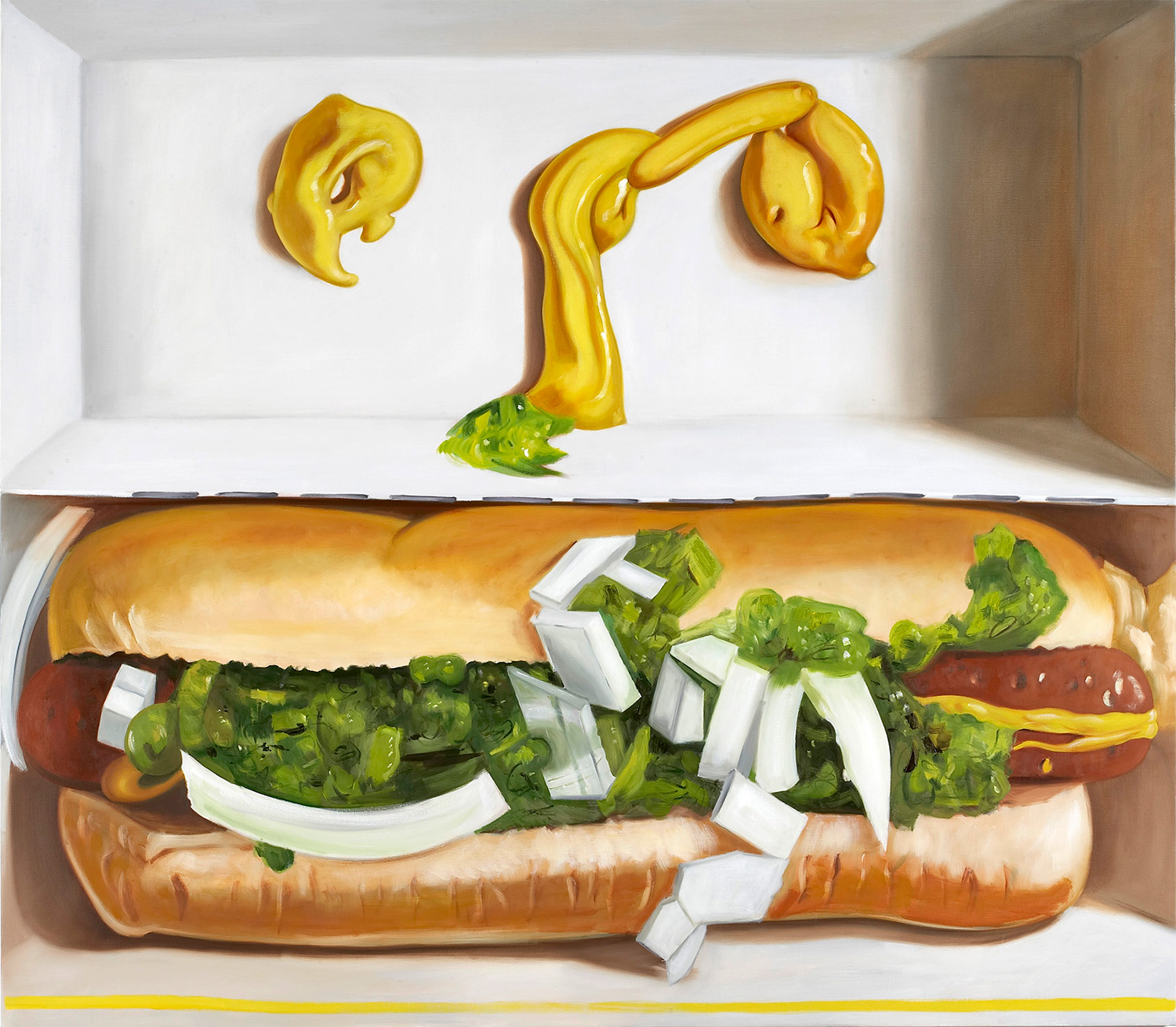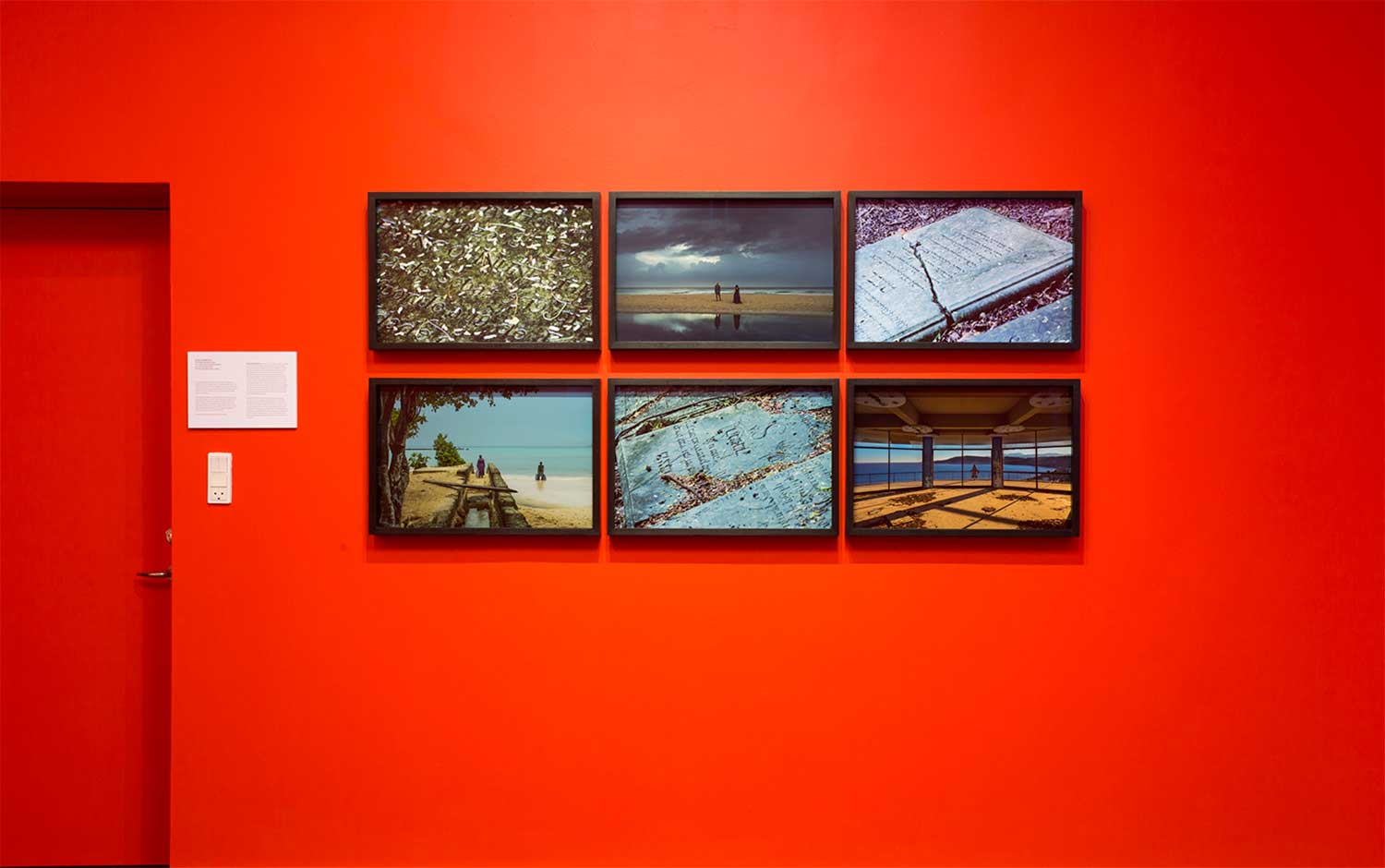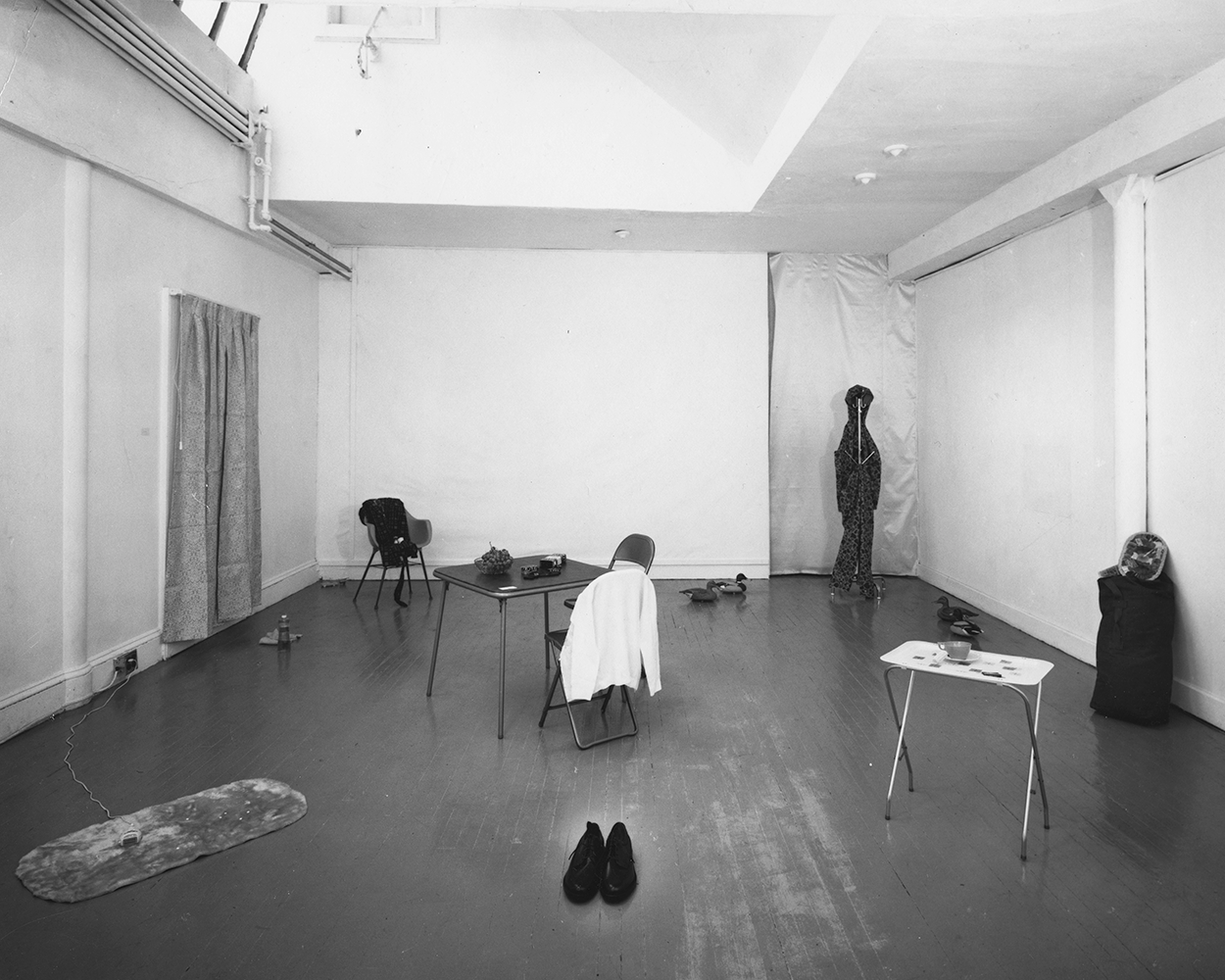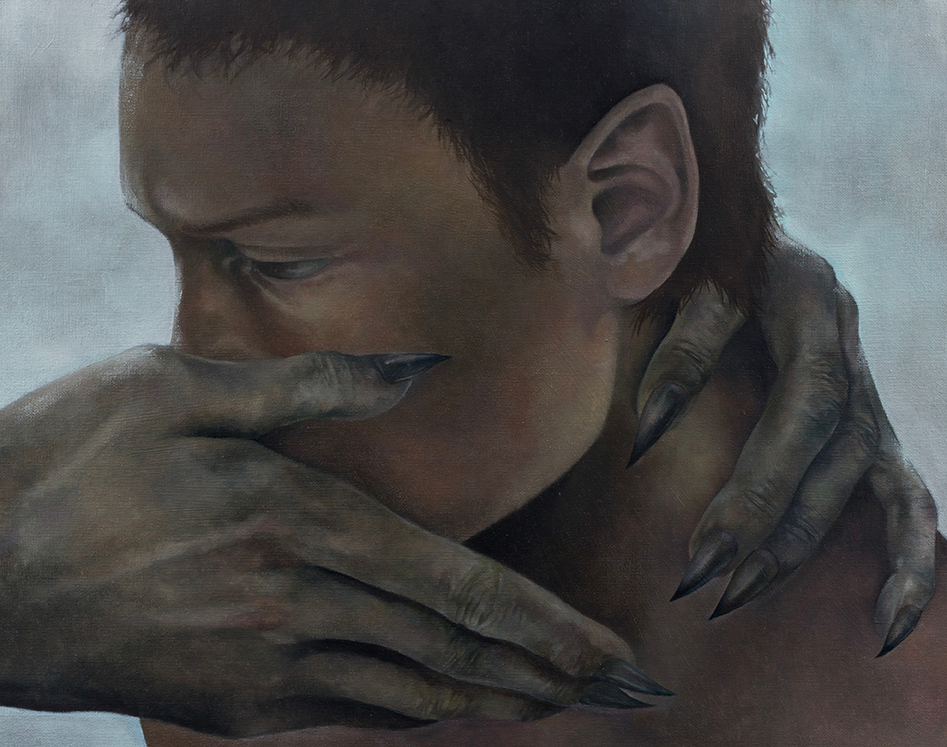
OMNES VIAE ROMAM DUCUNT — all roads lead to Rome. In the case of Tobias Kaspar this may hold true, given that Roma, just like Italo Calvino’s quintessential “invisible city,” Venezia, is a mirage. Or is it the road that really is fantasy?
Getting a grip on the multifarious work of Kaspar is best started with The Street, a project sited in Rome and about Rome, too, his then place of residence, tied to New York, the art-world capital. A compound work, as is typical of Kaspar’s practice, the project was presented in the form of a teaser in 2015 at the Instituto Svizzero di Roma, as part of Art Basel Parcours, and culminated in a one-day event in 2016 in Rome’s legendary Cinecittà Film Studios, accompanied by The Street Times, a project newspaper (a reprint of which was featured in issue no. 309, June–August 2016, of this magazine). Kaspar described the complex choreography of the piece, which took place at an outdoor studio film set used for Martin Scorsese’s epic crime drama Gangs of New York (2002, starring Leonardo DiCaprio), as “a twenty-four-hour theme park.” Wandering this Roman road, nothing was what it seemed to be: the makeshift gallery, the store that is more a concept, the very lights of that city of cities. Tackling the concoction of metropolitan life, and art’s dependence on it, this exemplary work is a testament to Kaspar’s principal quest to present a making-of of civic imaginary itself.
That is: film, a recurring reference in Kaspar’s work. The Devil Wears Prada, The Bling Ring, One Flew Over the Cuckoo’s Nest, and Melancholia make up other cornerstones of Kaspar’s more elaborate works. Their smallest common denominator? Madness in style, perhaps. In any case, there’s clearly something wrong with the social systems depicted; meanwhile the filmmaking itself stands out for its utter artfulness. And yet, Kaspar has made no film work to date, except for three relatively plain videos, such as Hydra Life (2013), a half-hour silent close-up of Inka Meissner (the artist and co-owner of Lars Friedrich gallery in Berlin and protagonist in Loretta Fahrenholz’s early films) in a film-set-like changing room, wearing an elegant white bathrobe and slowly applying moisturizer: an intimate backstage moment, a scene of a scene.
More directly than Kaspar’s fascination with film, the art form of the literary novel transposes to practice proper: Leo Tolstoy’s Anna Karenina to Anna K (2017), a series of framed photographs of a tennis court underneath printed quotes from the novel; or Laurence Sterne’s The Life and Opinions of Tristram Shandy, Gentleman to Toby’s Tristram Shandy Shop (2015), a Berlin project space turned store for the sale of the rare original edition of the novel. Another novel, Aliens & Anorexia (2000) by art-world and -theory insider Chris Kraus (which I just happen to read while writing this text), proves particularly instructive in terms of what Kaspar seems to be after with his use of both cinema and literature: “The ‘idea of the movie’ is that emotion is a place. It’s site-specific. Just as the optic nerve makes cubist cut-ups of objects for the brain to reassemble, emotion happens in and out. It’s a symbiotic loop, a country that we enter through our bodies.”[i]

So back to the roots: Tobias Kaspar, Basel-born in 1984, now living and working in Zurich and up north near Riga where he keeps a country house with his Latvian-born partner and former collaborator, the curator Egija Inzule, and their child. The first work of his I saw consisted of a set of espresso cups and saucers, each printed on the inside with variations on the impossible statement “Ich wurde geköpft” — in reference to Danton’s pre-guillotine quote, “You can say, ‘I’ll be beheaded. But you can’t say, ‘I’ve been beheaded!’,” as reported by the 19th-century French writer Stendhal — and titled after the Italian cities where Stendhal once lived: L’Aquila, Firenze, Genova, Modena, Milano, Palermo, Pescara, Portofino, Pozzuoli, Roma, Trieste, Venezia (2011) — his contribution to the slightly headless super group show “Based in Berlin.” Besides the capital, Kaspar has had German residencies in Frankfurt am Main, where he studied at the prestigious Städelschule, and further north in Hamburg, where he experienced his first art-school years.
Which brings us back to the peculiar site-specificity in Kaspar’s work — the fact and fiction residing right in between the geographic and the discursive site as we know it. For example, Provence: Tobias Kaspar the publisher, and his friend and fellow, the Hamburg-based art historian Hannes Loichinger, light-handedly relocated Provence, the geo-cultural region and layer cake of clichés (think Elle Decor) to PROVENCE, “the eight-issue magazine dedicated to hobbies,” with each issue corresponding to a letter of the title and dedicated to an associated activity, such as the most recently issue “C” (for “critique”). The magazine was launched in 2009, in Basel, with an exhibition of works by artist’s artist John Knight. The show also featured a survey on the advertisements created by Ghislain Mollet-Viéville, a French critic and collector of Conceptual Art whom Kasper would later address in his 2012 exhibition at Halle für Kunst Lüneburg (curated by Hannes Loichinger and Valerie Knoll), titled “Bodies in the Backdrop” (2012), after Élisabeth Lebovici’s essay on Mollet-Viéville’s lifestyle and self-presentation. The site in Kaspar’s work can thus be understood as predominantly a social site: “the place to be,” continuously recast by the beings at stake, a ready-made of relationships.
Appropriation art — one may wonder whether it’s relevant to Kaspar’s work. The notion of property provides a steady horizon for Kaspar’s agile criticality. Like Kaspar’s method of siting his work in ways specific to the thinking of and about a place, it’s the property of the mind, the most perfidious of properties, that forms the core of his interest. It is intellectual property more specifically, which performs as a protagonist in Kaspar’s conceptual construct. Form follows function here too, and the intellectual property, the idea, which is to be released onto an ever-smarter market, becomes the prime site for the speculative function of capital in action. But capital is of course inherently relational, as goes the Marxian mantra. Which is not to say — in general, and in this artist’s work — that its immaterial form doesn’t materialize into all kinds of repositories for desire (see Kaspar’s Das Leonardo DiCaprio Album, 2009). And it’s right there, precisely, at the intersection of idea and commodity, that a very peculiar feature of Kaspar’s work occurs: it’s all made in such a way that you can never really tell if his object-works (including the photographic and painterly objects, for example the Untitled (160201) series of laser-engraved reflective fabric from 2016) are intentional one-liners — a no-frills appropriation of commodification’s deadpan functioning to expose that fact alone — or if their well-crafted superficiality only serves as a thread in a broader tissue of contemporary skepticism, a flagship circumnavigating its product.

The short track from idea to function via desire is fashion. It paves its tarmac road right through the self, bulldozing towards, well, Milan rather than Rome. And Kaspar’s work has seen plenty of runways, for example the show put together by the institution’s staff for the performance Warsaw Wardrobe at the Museum of Modern Art in Warsaw (2016); the “signature style” namesake collection of white denim for the white cube titled Holiday (launched at his institutional solo debut at Midway Contemporary Art, Minneapolis, 2013); or the heavy-metal footwear, a life-size pair of iconic shoes, cast in bronze, cut open, and polished only on the inside (1406 Dr. Martens, 2017). However, Kaspar’s sampling of styles is knottier than this listing can imply. Emotion happens in and out. In other words, affect — affirmation, say — is produced by a short-circuiting of outer and inner stimuli. Yet while the outside fabrication of “a look” — subjectivity, say — is clearly bound up by institutional parameters, say those of the Museum of Modern Art, there’s that inner country of hardheaded deviation, say critique, that Kaspar cuts up carefully, for the beholder to reassemble. Such laboring through the thicket of estrangement could also be understood as critique via over-affirmation, a deadly embrace.
Institutional critique — one may figure out, and ride another road to Rome. Or is it Romanticism? For Kaspar’s practice clearly outlived the idea of “the outside,” of a place for art beyond the realm of canonical racket or commercial contest. Kaspar’s friend and fellow traveler, Merlin Carpenter, has dealt with this question extensively in the essay that surrounded his solo exhibition “Midcareer Paintings” at Kunsthalle Bern (curated by Valérie Knoll). Carpenter concludes, “At the risk of directly saying what I mean, I suggest that the new revolutionary subject might be new groups, forming inside existing groups.”[ii] By breaking away from premade allegiances, the social systems of belief, new solidarities are to arise from the ashes of burnt bridges. Roads to nowhere? Look at another group of works revolving around the “problem” (which it is) of residency, of home: Two Cities – Two Lives (at Solo Shows, in Tobias Maier’s apartment in Sao Paolo, 2015) reveals Kaspar’s personal investment into this question. Pitting his ever-blossoming geo-cultural imaginary against the goliath of leisure industries, art included, Kaspar’s work faithfully remains at odds with its institutional context and its own function therein at all times — fully circling the fantasies of fashion (fine feathers, fine people), publication (publish or perish), and leisure (when a habit costs money, it’s called a hobby).
It’s July 2018, some eight weeks before the much-anticipated solo exhibition at the much-respected Kunsthalle Bern (the Swiss capital), just after its hundredth anniversary. I browse the institution’s website and see: a colorful video clip of the Aurora Borealis, the Northern Lights, rotated by ninety degrees to smart-phone-screen format, which used to be called “portrait” format, suitable perhaps for the face looking at the screen but by no means to the landscape on view in the clip. Accompanied by meditative music and a French ad for ShareWood Switzerland, a forest investment company, the loop underneath the header “Independence” evokes a geography of desire, a heavily mediated concept of the surplus of elsewhere. I replay the muzak while writing, which efficiently makes a crucial fact drift almost into oblivion: the absence of any artist’s name attached to “Independence,” to the show, to the concept. Has the artist dissolved into a rural retreat’s blissful disconnection from art as a business as usual? Will the suggested investment into predominantly natural resources herald an ever-more-entangled grappling with renewable economic evil?
The invisible artist, just like the “invisible city,” is the one most present. What you see is what you get, what you imagine is what you really want. Present not as a place or a person to count on, to count in, or account for — and thus evading a basic equation of value production — but omnipresent as an apparition, as a devil in the details, as subjectivity as such: an “inscape” (Kraus) after all. Eliminating the given name from the exhibition is eliminating the solo from the show, or the mid from the career. What remains is not the much-sought-after space of one’s own, but some “haute collaboration” (Kaspar) indeed: a pretty social fabric or a roadmap to Romansh.




